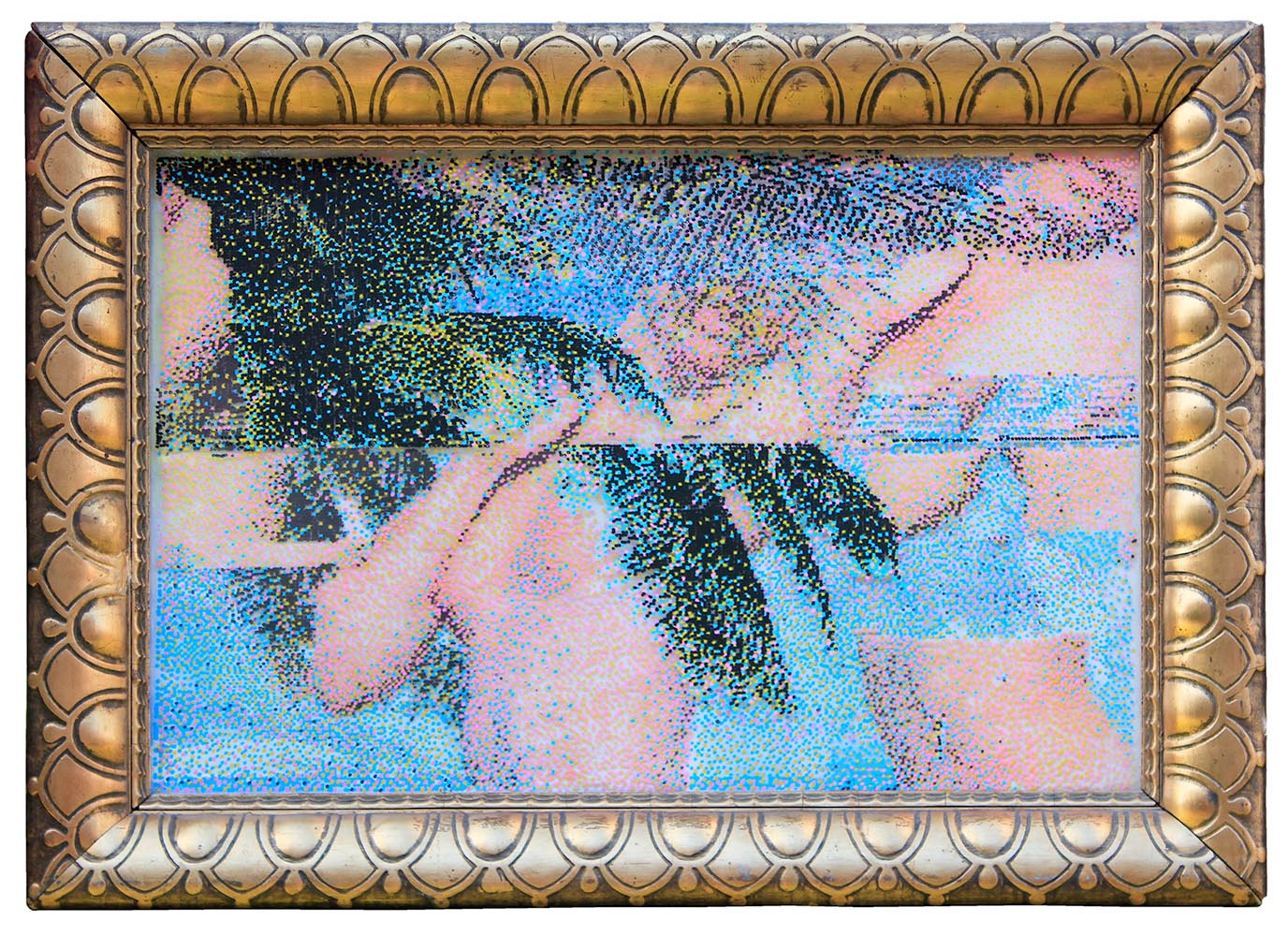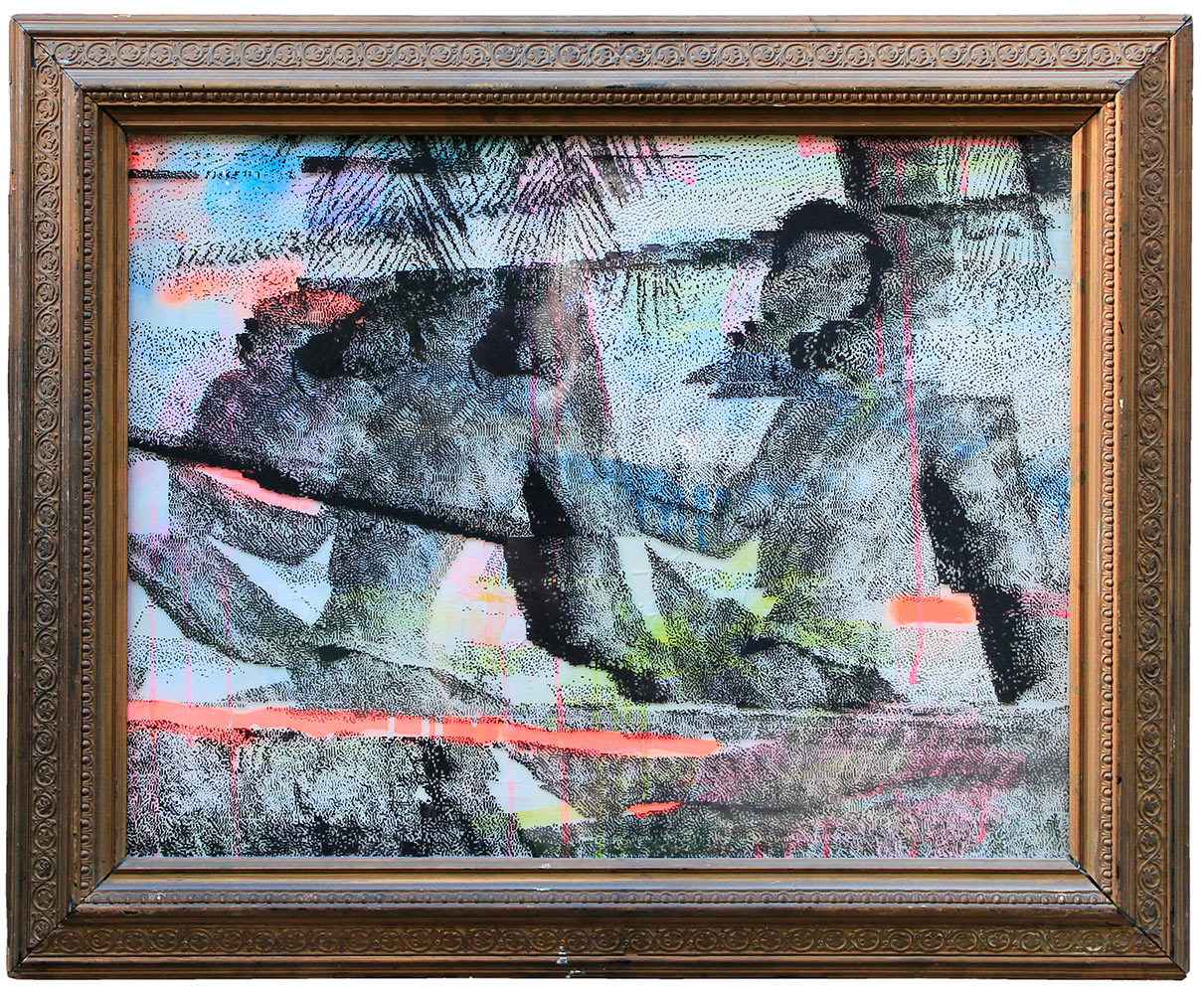Paradise
Paradise The end of the world - A paradise, 2012 touch-up pen on plexiglass The idea of an end of the world and the idea of paradise always corresponds to the contemporary thinking of mankind, its technical, economic, intellectual and overall social level of development. In my pictures I address the modern idea of paradise: beach, sea, palm trees, eternal summer, beautiful, carefree people. The everlasting vacation, as found in the well-known advertising brochures. The perfectionism of digital imagery is combined with the insignia of middle-class homeliness, e.g. ornate, gilded plaster stucco frames. In two and a half dimensions there are motifs that seem somehow broken, there are disruptive factors in the supposed idyll that looks so realistic from a distance. Due to deliberately used digital image errors that are transmitted by hand and the use of corrupt files, missing file elements or misinterpreted information have become image elements. In addition, there is the humane error rate through the analog (manual) transfer of the individual image components to the different levels. The use of pixels (60,000 to 556,000 px per image), which make up the image structure of the individual layers, serve as a reference to the digital flood of images that shapes our imagination today. In the age of mass culture, of course, the idea of paradise, even if only the holiday paradise, is marketed in large numbers. The paradise disappears through the adaptation to mass tourism, it gets cracks, mistakes and very ugly sides. Consumerism destroys our idea of paradise. The end of paradise, the end of the world? At least the end of the world is closely linked to the disappearance of paradise in human thought.

60k, 72cm x 52cm, touch-up pen on plexiglass, custom frame 2012, Tonio Mundry

570k, 77cm x 62cm, touch-up pen on plexiglass, custom frame 2012, Tonio Mundry